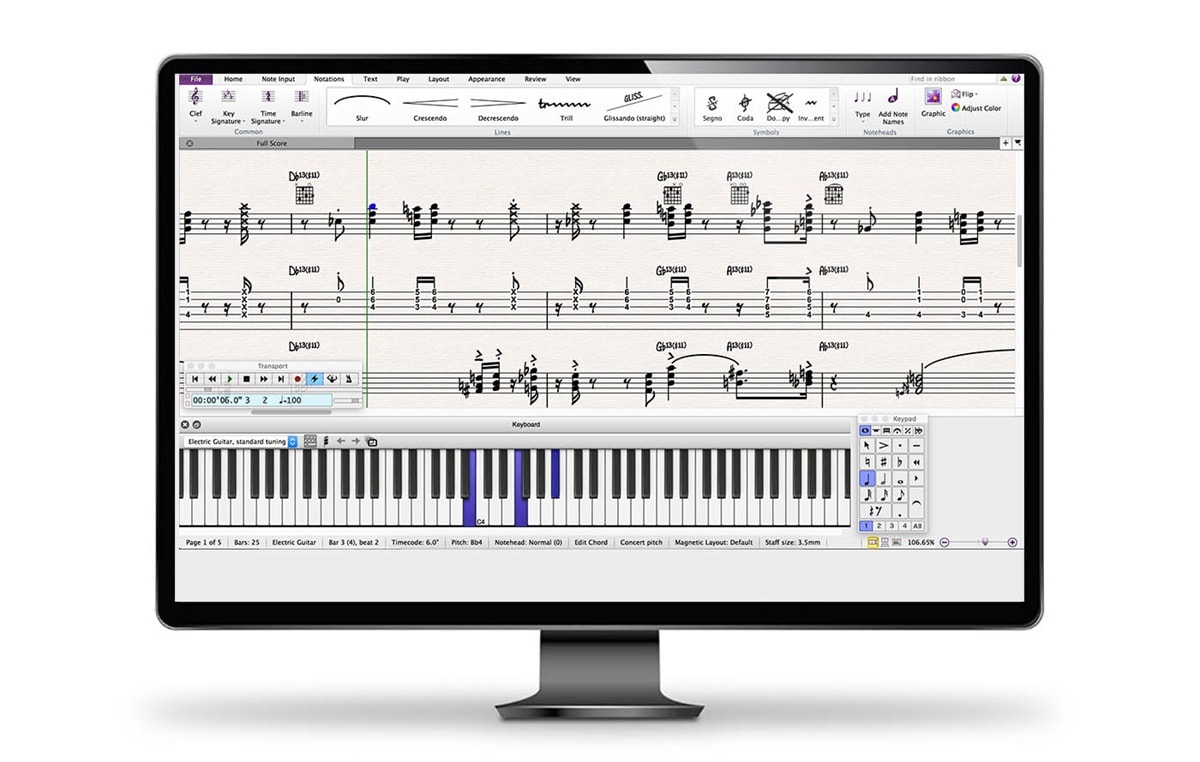
The bar layout of commercial and jazz charts tend to be more symmetrical than engraved music. MULTI MEASURE REST SPACING FOR COMMERCIAL CHARTS Both Sibelius and Finale can do this easily.įor Sibelius, check “Show ‘1’ above bar rests”, which numbers single bars of rest:įor Finale, change “Start Number At:” to “1” in the Document > Document Options > Multimeasure Rests dialog:: It is common practice these days to start numbering H-bar multimeasure rests at 2 bars, however, there is a convention in some jazz charts to number single bars of rest. More information on Finale’s Shape Designer is here if you want to roll your own.
SIBELIUS INSERT MEASURE DOWNLOAD
Download the file here, and follow the instructions in the document, and you’ll be up and running in a couple of minutes. To save you some work, I have created a Finale file with the narrow shape used by several commercial copying houses in L.A. You can create a shape in the Shape Designer, then export that shape as a shape library, and then import it into new scores or your template as needed: use:įinale can use any shape for a multirest (more on that in a minute). Sibelius has a preset Narrow option in Engraving Rules > Bar Rests, which gives a look similar to what several commercial copying houses in L.A. If you like the look of really narrow H-Bars, but adjusting the start and end points isn’t quite doing it for you, it may be time for Plan B. In Sibelius 7 or later, Engraving Rules are found in the House Style Group of the Appearance Tab: In all versions of Sibelius at least as far back as Sibelius 6, the start and end point of the multimeasure rest are changed with a single “Distance from multirest to barline:” value, found in Engraving Rules > Bar Rests. To edit an individual endpoint of one multirest, use the Selection Tool to highlight it, then right-click and select Multimeasure Rests > Edit from the contextual menu. You might use this, for instance, to adjust the end point of an individual multirest to avoid a collision with a clef change at the end of the multirest.

In Finale, you can also change the start or end point of any individual multirest. It’s pretty easy to experiment with different widths and come up with something you like the look of. (adding “s” after the number enters the value in spaces regardless of view settings) Typically, these will be equal amounts, shown here, 1.5 spaces: At the top of the pane, you will see two numeric entry fields “Adjust Start Point” and “Adjust End Point”. In Finale (as far back as at least 2010) , Go to Document > Document Options > Multimeasure Rests. This distance setting is equally controllable in both programs. How these are set is largely a matter of personal taste, and even a small adjustment can make a big difference in the look of your parts. You can see that the Finale and Sibelius defaults are slightly different from one another. One way to subtly give your parts look a distinctive look is to adjust the distance between the ends of the multimeasure rests and the barlines, or the “white space”. The defaults for Finale and Sibelius are nearly identical.

In modern charts, the standard type of multimeasure rest is called an “H-bar”.
SIBELIUS INSERT MEASURE HOW TO
In this tutorial, we’ll learn how to control multirest settings and also, how add a unique touch to your charts in Finale and Sibelius with custom multirests. You may not have given them much thought, but Multimeasure Rests play a key role in how your parts look.


 0 kommentar(er)
0 kommentar(er)
